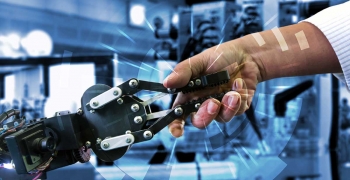Regulatory compliance in the process industry is fast evolving owing to fragmented processes and business growth. This gives rise to an array of challenges such as skill gap, regulatory and compliance issues and, most importantly, an increase in workplace safety costs. The latter is directly linked to the rising rate of accidents and injuries at the workplace, ineffectual risk analysis, and inefficient forecasting. To ensure safety management, achieve compliance, and identify potential hazards, the process industry has adopted conventional methods such as Hazard and Operability Study (HAZOP).
Another way around these challenges is to leverage the engineering and design expertise that the industry applies to manufacturing. The need of the hour is to embrace a new model of process safety management, one that decomposes the problem into its constituent components and addresses each comprehensively and synergistically to cover all bases. In tandem, it is necessary to leverage the power of digital technology to deliver complete safety solutions. This will ensure improved working conditions and instill greater trust in workers.
On the factory floor, critical safety concerns revolve around manual installation, operation or servicing of machinery, and electrical safety. To design workflows and protocols that minimize worker injuries, the first step is to carry out detailed inspection for a comprehensive analysis of existing workflows, assess the degree of risk, and identify areas of concern.
Insights derived through this process then inform the conceptualization of specific and targeted interventions that can address these lacunae. The solution is first articulated in a virtual form which then undergoes refinement through subsequent iterations. This constitutes the first and most critical phase of machine risk assessment and solution development.
In the next phase, chosen designs are prototyped and mounted on 3D replicas of the machinery for testing and fine-tuning. Then follows fabrication, assembly and the installation of safety guarding systems with every step being subjected to careful supervision in accordance with safety guidelines.
A similar process must be followed for electrical safety, which starts with a thorough inspection, identification of risk areas, and development of detailed plans for risk mitigation and management. Relevant evaluations include load flow, short circuit, relay coordination, and ground grid studies. Based on the findings, settings on devices can be modified to help ensure equipment protection, minimize arc flash, and reduce system disruption. Another outcome takes the form of optimized sequences of operation for protective devices.
In all instances, it is essential to enlist the services of Certified Machinery Safety Experts or Electrical Safety Experts as these individuals are familiar with industry standards and machine safety legislation.
According to the International Labour Organization (ILO), more than 600 work-related accidents occur every minute. Concerned over the rising rate of such incidents, even those organizations that started off with a brick-and-mortar presence are now digitalizing their factory floor operations primarily to adapt and ensure safety.
With the onset of Industry 4.0, supply chains are benefitting from increased intelligence through connected machinery on the factory floor which allows for real-time supervision and provides predictive alerts. These mechanisms can be actively leveraged to mitigate safety risks and boost productivity.
As advanced data analytics delivers insights at every level, accidents are being averted through automated alerts, statistical analysis, forecasting, and extrapolation. Such predictive analytics delivers significant benefits – take for instance a subsidiary of a major manufacturing company that reduced workplace safety incidents by more than three quarters.
Workplace safety and equipment monitoring go hand in hand. Several industries rely on digital visualization to effectively monitor remote areas that are otherwise difficult to access. In this way, the Industrial Internet of Things (IIoT) has found use in the predictive maintenance of equipment.
This development is particularly valuable for industries where workers are routinely exposed to hazardous working environments. The payoff that is likely to emerge, in terms of improved health and safety, productivity, efficiency, output quality, revenue and market share, compensates substantially for the initial investment necessary to deploy IIoT-based safety management.
Wearables have revolutionized the entire concept of personal protective equipment (PPE), and are no longer limited to safety elements or gloves. With the addition of sensors to existing manufacturing infrastructure, information is harvested, transmitted and analyzed to predict risks and avert them on time. Cloud connectivity increases the speed and efficiency of data sharing with stakeholders; in this case, the workers themselves.
Along these lines, major engineering service companies have begun to install radio chips in workers’ helmets and sensors on their equipment to enable constant vigilance and prevent health issues and tragic situations. Ultimately, this translates into long-term cost-savings and enhanced compliance.
Other new technologies such as augmented reality and virtual reality enable inspections to be carried out more efficiently. By simulating expected conditions, diagnosing problems, and finally assigning them to safety maintenance groups, these breakthrough technologies equip inspectors with valuable visual-based tools.
Forecasts indicate that digitized plants are the future of manufacturing, where connected machines will collaborate with one another and work more efficiently. At the same time, digital technology, when integrated with machine safety and electrical safety protocols and solutions will open up new avenues for process safety management.
Strategic design thinking enables a holistic approach to the complex and pressing problem of worker safety. Implementing streamlined protocols for addressing machine and electrical safety on a regular basis goes a long way toward significantly reducing casualties.
Further, embracing digital technologies allows manufacturers to transcend the basic requirements of regulatory compliance and actively create policies to ensure commitment toward the safety and well-being of their workers. This system can be rounded out with employee insurance and first-aid services.
With the implementation of such policies, manufacturers deepen an ethos of trust between themselves and their workforce, guaranteeing enhanced performance, productivity, and output.
However, the benefits don’t end there. Effectively integrating smart technologies into manufacturing lays the foundation for the process industry to enter the digital future with greater confidence in its ability to embrace a wider range of emerging technologies while catering to varied demands. This will bolster the spirit of innovation and help create a more diversified range of offerings, enabling delivery of all-round value to clients.




